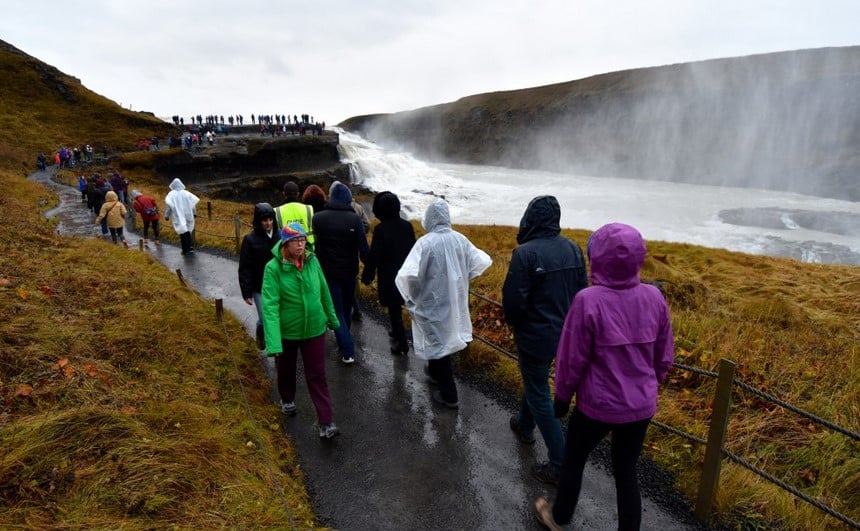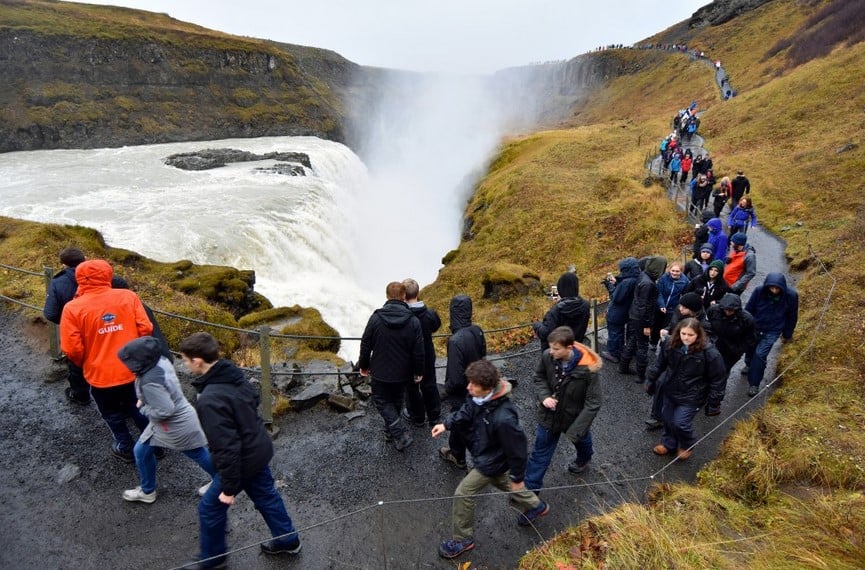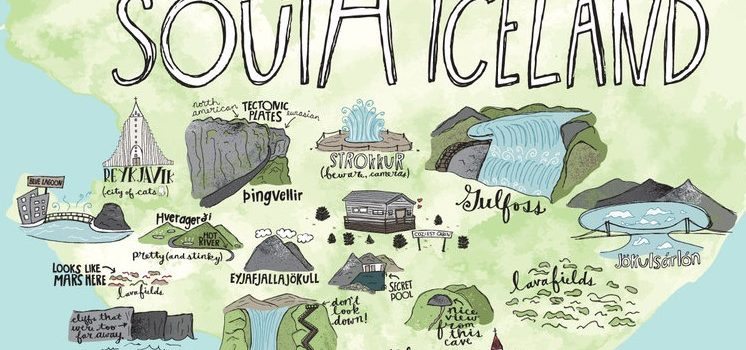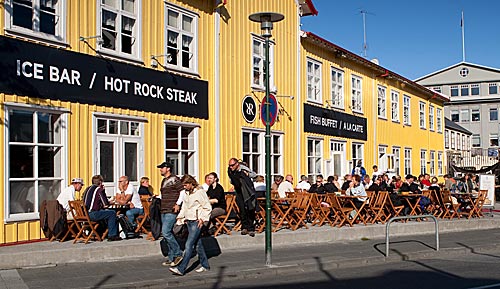The Westfjords
The Westfjords region has sometimes been dubbed “the most famous unknown place in Iceland”. Well, throw in the prestigious “European Destination of Excellence” awards and add to that the fact that the Lonely Planet travel guide put the area on its top 10 list of regions in the world to visit in 2011, and you will see that the Westfjords are becoming increasingly famous – or perhaps less unknown.
Lonely Planet, the respected travel guide publisher, placed the Westfjords in its top 10 regions of the world to visit in 2011, saying that the “oddly shaped” peninsula is “as isolated as it is spectacular”. Luckily, “isolated” does not mean inaccessible. With only 7400 inhabitants in the area, each person has around 1,2 km2 of personal space, so there is ample room for any visitors as well.
Although the locals are great, it is, by and large, the nature that attracts visitors. For understandable reasons as well: it is untouched and almost uninhabited. The cliffs and valleys are packed with birds, the uninhabited fjords offer a moment of silence and tranquillity, and the Arctic fox proudly roams the mountains and inlets. The waterfalls are high and the streams pure. The distances are long and the fjords are deep. And then there are places where there are no roads at all.

The Westfjords are a great place to watch the Northern Lights (Aurora Borealis) during the winter and equally fantastic to experience the midnight sun during the summer.
Visiting the Westfjords is surely a different experience. It is Iceland, but yet a different Iceland altogether.
Want to know more? Visit www.westfjords.is
European Destination of Excellence
Westfjors are Iceland’s fyrst EDEN-destination. EDEN is the acronym for European Destinations of Excellence, a project promoting sustainable tourism development models across the European Union. The project is based on national competitions that take place every year and result in the selection of a tourist “destination of excellence” for each participating country. Through the selection of destinations, EDEN effectively achieves the objective of drawing attention to the values, diversity and common features of European tourist destinations. It enhances the visibility of emerging European destinations, creates a platform for sharing good practices across Europe and promotes networking between awarded destinations.
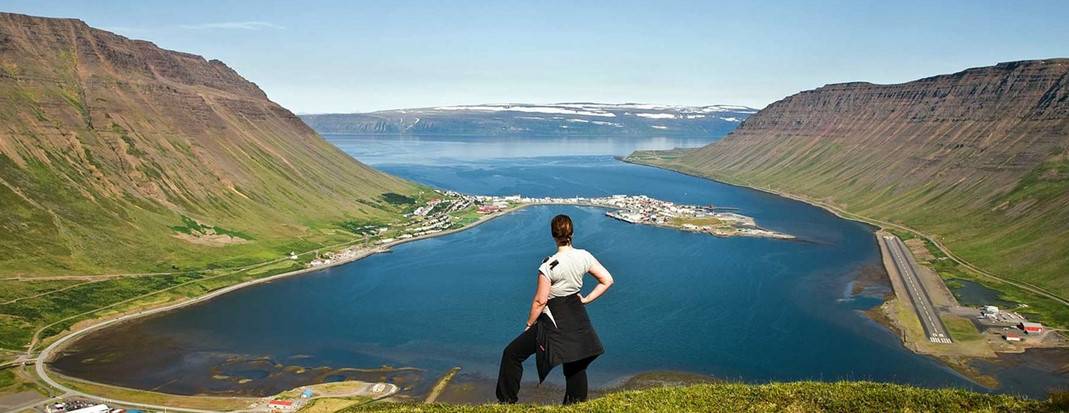
This European quest for excellence in tourism is developed around an annual theme, chosen by the Commission together with the relevant national tourism bodies. This theme functions as a leitmotif: so far, rural tourism, intangible heritage and protected areas have been the main EDEN themes.
The key feature of the selected destinations is their commitment to social, cultural and environmental sustainability. The recipients of the award are emerging, little known European destinations located in the 27 Member States and candidate countries. The EDEN project helps to spread the sustainable practices used in the chosen destinations across the Union and to turn these places into all-year-round venues. The process thus aims to help de-congest over-visited tourist destinations.
The development of this project is backed by the European Commission which launched the project in 2006 and still plays a crucial coordinating role.
South Iceland
Nowhere on earth is the junction between the European and American tectonic plates in the Earth’s crust as clear as on the Reykjanes peninsula in the southwest, and at Þingvellir: the plates diverge here by as much as 2 cm per year. But the gap is constantly being filled, as volcanoes have been erupting regularly throughout Iceland’s history.
Þingvellir is by far Iceland’s most famous historic site. The Alþingi, or general assembly, first met there in AD930, and continued to do so for nearly nine centuries, until 1798. Various important events in the Icelandic Sagas took place at Þingvellir, and in 1930 it was declared a National Park. In 2004 Þingvellir was added to the UNESCO World Heritage List.
Not far away is the old episcopal seat of Skálholt, which was the centre of the church and Christianity in Iceland from the mid-11th century until the end of the 18th.
But the region has other attractions: places of outstanding natural beauty include magnificent waterfalls, of which Gullfoss (Golden Falls) is the best known. In many geothermal areas villages have grown up, where exotic fruits and vegetables are grown in greenhouses heated by hot springs.

The best known hot spring is Geysir, from which derives the English word “geyser” for spouting hot springs: the big Geysir is surrounded by many more springs of all shapes and sizes.
A little further east are two of Iceland’s most active volcanoes. Mt. Hekla has erupted about 20 times in Icelandic history, and Mt. Katla, under the Mýrdalsjökull glacier, is almost as active. Many years have now passed since Mt. Katla last erupted, and according to geoscientists it is overdue for another burst of activity.
History echoes in every footstep: this is where the Saga of Njáll, one of the most famous Icelandic sagas, took place. The Icelandic Saga Centre in Hvolsvöllur tells the story. Other museums in the region include the Skógar Museum, one of Iceland’s leading folk museums; and Draugasetrið, the Ghost Centre at Stokkseyri, a unique museum dedicated to the phenomenon of the Icelandic ghost.
Skaftafell is a popular tourist destination, with a full programme of events for visitors. The Visitor Centre informs visitors about the remarkable natural environment of the park, while at Höfn in Hornafjörður there is a glacier exhibition. Activities include sightseeing cruises among the ice floes on the Breiðamerkurjökull glacial lagoon, and trips up onto the glacier.
Tourists in the region can experience its varied and picturesque natural landscape through such activities as horseback riding, white-water rafting, and glacier trips.
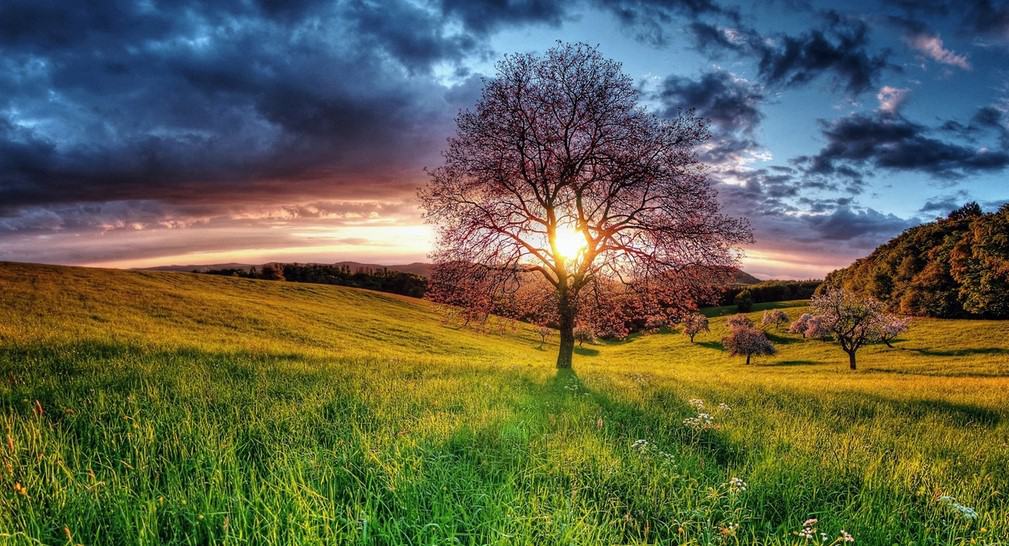
Westman Islands
Just off the south coast are the Westman Islands, with their impressive natural beauty, abundant birdlife, and eventful history. A little over 30 years ago the islanders were forced to abandon their homes on Heimaey island when a new volcano erupted on the edge of the town. But they returned as soon as the eruption died down, and visitors can see the effects of this natural disaster on the island and its inhabitants. Currently underway is the excavation of several homes that were buried by pumice and lava, with the intention of making them accessible to visitors under the auspices of a project called Pompeii of the North.
Steinunn Þórarinsdóttir exhibits at Dag Hammarskjold Plaza
Þórarinsdóttir’s figures, standing along the main park corridor and seated on park benches, mirror each other in silent conversation and form unseen borders that visitors are welcome to cross—serving as ambassadors between sculptures. The exhibition addresses humanity and cultural diversity, an exceptionally appropriate theme for one of the most culturally and politically active sites in all of New York City.
Steinunn Þórarinsdóttir (b.1955) studied at the University of Portsmouth Fine Art Department in England and the Accademia di Belle Arte in Bologna, Italy. She has been working professionally for over 30 years and has exhibited widely in Europe, Japan, the United States, and Australia. Her works are in private, public, and corporate collections around the world. She has completed commissions at Leifur Eiríksson International Airport, Iceland, and the two-part memorial Voyage in Hull, England, and Vik, Iceland among others.


CNN – Iceland one of Top 10 places to spend your 2010 Christmas
For a real treat for the tots, take them to Iceland, where local folklore has not one but 13 Santasbearing goodie bags at Christmas parties. The (or jólasveinar, meaning Yule Lads), each with Brothers Grimm-like characteristics such as “the spoon licker” and “the door slammer,” come into town one day at a time starting December 12.
Then there’s the Christmas Village at Hafnarfjördur, a town not far from Reykjavik that is known in Icelandic lore as the home of elves. The Christmas Village is open on every weekend from November 24 until Christmas day. Hafnarfjördur also offers walking tours to supposed elf homesites.
Back in Reykjavik, people start celebrating Christmas from late November by pigging out at traditional Christmas buffet dinners around town.
On Christmas Eve, bells ring throughout the capital, marking the formal beginning of Christmas.
There are bonfires and fireworks all over Iceland on both New Year’s Eve and the Twelfth Night, which falls on January 6, 2018.
Travel & Leisure Magazine Rates Iceland a Best Place for Holiday Travel
We could also mention that Travel & Leisure Magazine Rates Iceland a Best Place for Holiday Travel. Otherworldly landscapes,liquid-green aurora borealis, fresh seafood, fabulous shopping and 13 Yuletide lads and more..

Record-breakin month for Icelandic tourism
A record-breaking 65.606 tourists traveled through Keflavík Airport this last June according to statistics from the Icelandic Tourist Board, an increase of nearly 21% from June the year before.
The greatest increase was in tourists from North America, who outnumbered June 2010’s batch by more than 50%. Visitors from the Nordic countries increased by 17%, while visitors from central and southern Europe increased by 16%, and UK by 8%. Other countries saw a bump by 12%.
Out of the 65.606 tourists traveling through Keflavík Airport in June 2011, most tourists came from the USA (18%) followed by Germany (15%), Norway (8%), Denmark (7%), the UK (7%), Sweden (6%) and France (6%). These seven nations account for almost two thirds of all foreign tourists who visited Iceland in June.
In the first six-months of 2011, 206,886 foreign tourists have departed from Keflavík International Airport, a 21% increase compared to the same period in 2010, or 35,636 people.
Iceland has never been more alive than right now.
